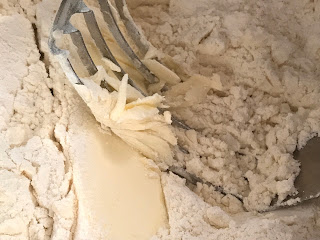At the start of every summer, I make a list of house projects that need to be addressed. You know it as the honey-do list. I’m the honey. So I decide what goes on the list. It feels so good crossing off one item after another. Such a sense of accomplishment. This summer is no different, with several small to-dos and one rather large to-do (but more about that later this summer). For now, one that always bothers me is the entrance from the garage into the house. I fondly call it the Owner’s Entrance. It is nothing more that two steps up and in. Nothing glamorous. Naturally, I would like it to be less utilitarian. With a little imagination and a little love it could be a nice welcome home. A small place to hang things like damp pool towels, market bags and dripping umbrellas. A place to sit when removing your shoes. A simple bench and a simple peg board. But first, the peg board, later the bench.
(1) 1” x 4” x 42” Wood Board.
(1) ¾” Wood Dowel
2” Wood Screws
3" Wood Screws
Level
Drill
Clamps
Counterink Bit
Saw
Tape Measure
Square
Sand Paper
For a 42” length board I am using 7 pegs.
To determine placement for your pegs, use this formula... number of pegs + 1 , then divide by the length. So, 7 (pegs) + 1 = 8. 42 (length) divided by 8 = 5.25 So, there will be 5 1/4" space between each peg.
Start on the left hand edge and measure 5 ¼” and put a mark. Measure over another 5 1/4" from the first mark and make a second mark. Continue until you have made 7 marks (one for each peg). They will be equally spaced along the board.
Measure 3 1/2" on the dowel and cut. Repeat for remaining pegs.
Mark the center on one end of each of the pegs with a pencil.
Drill hole 1” deep into the end of the peg. Sand all ends. Set aside.
Turn the board over to the front. The screws will be extending. Take one peg and screw it onto the wood screw. Turn the peg until it meets the board. Repeat for all pegs.
Locate on the wall where the studs are and mark.
Hold the board up and make sure the board is level. Make a mark on the board where the stud is located.You should have one on the left and one on the right. Two screws is probably all you need to hold a board this length.
Using the countersink bit, drill a hole on the two new marks.
Hold the board in place, using the 3" wood screws attach the board to your wall. Repeat for the second hole. Remove tape.















































































